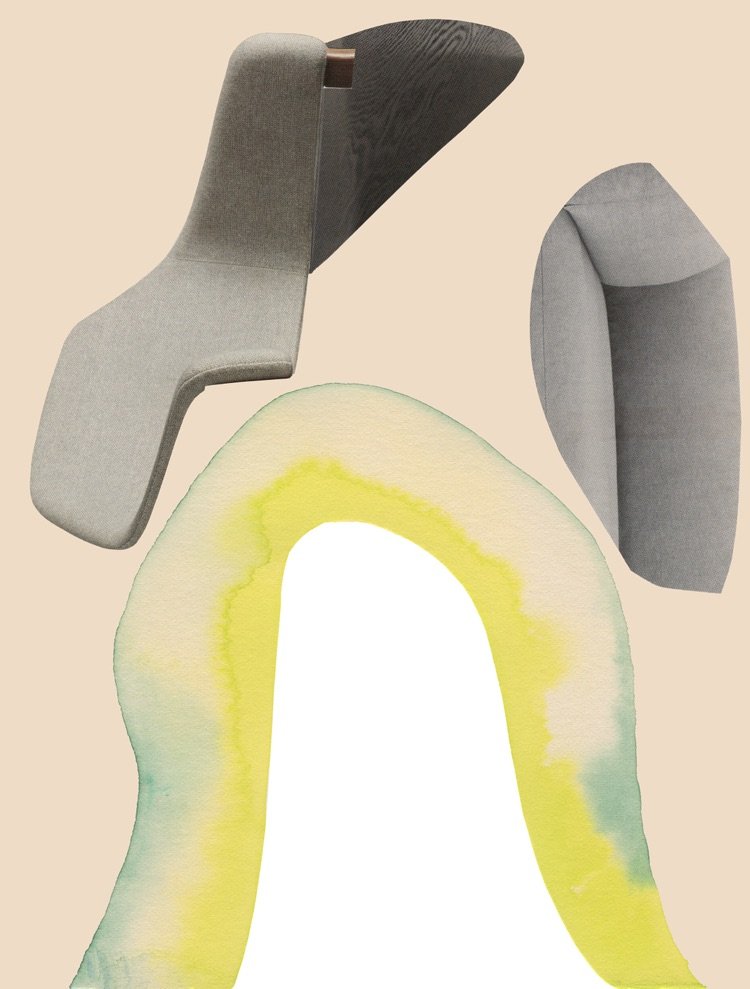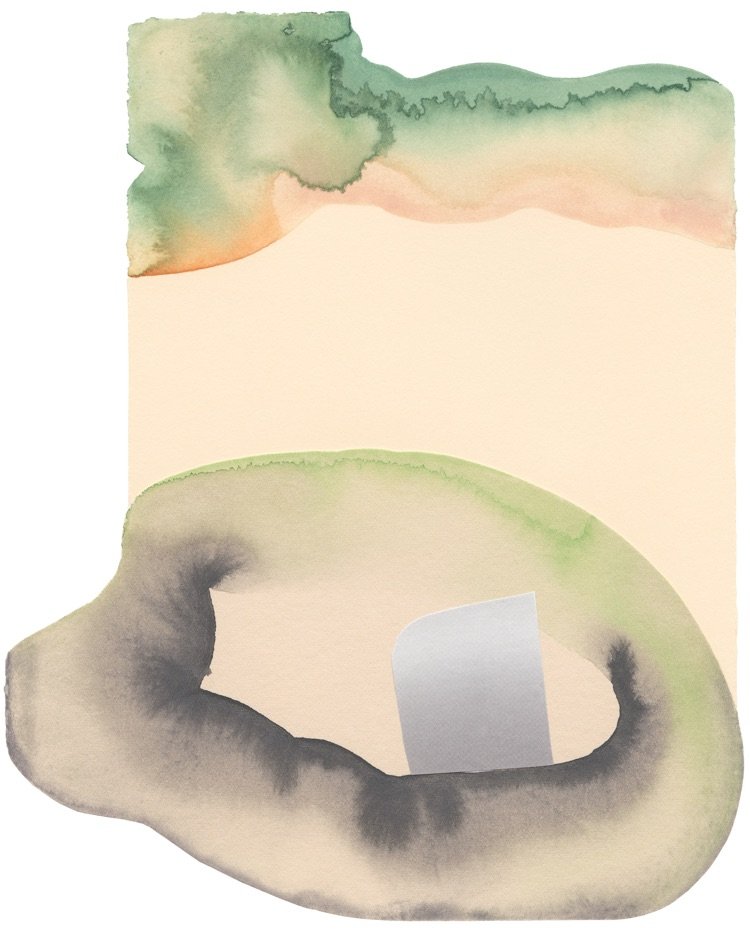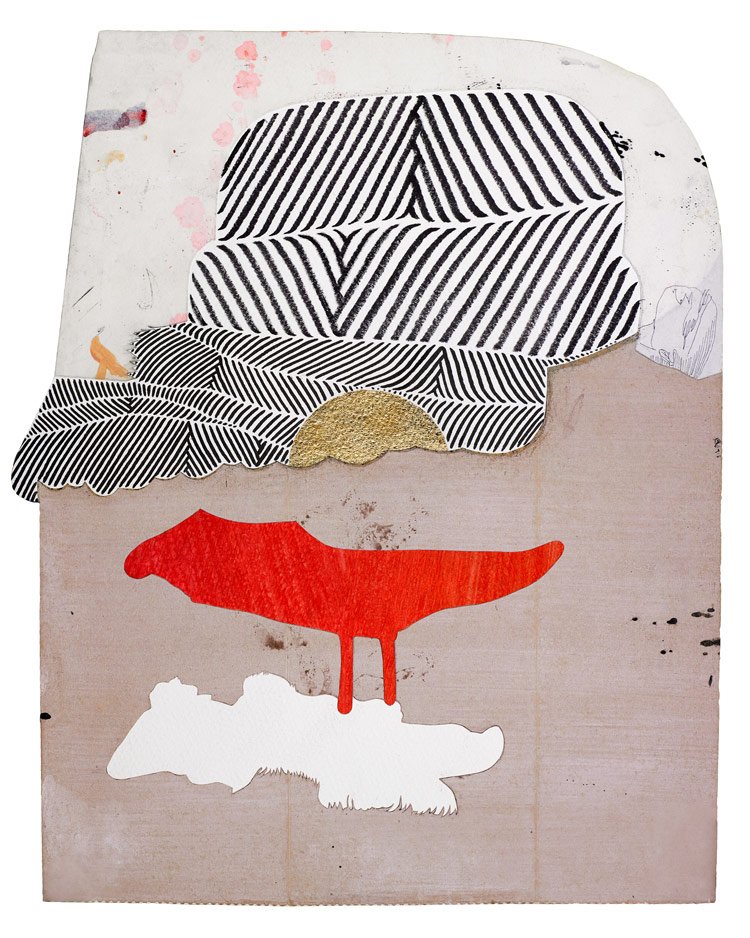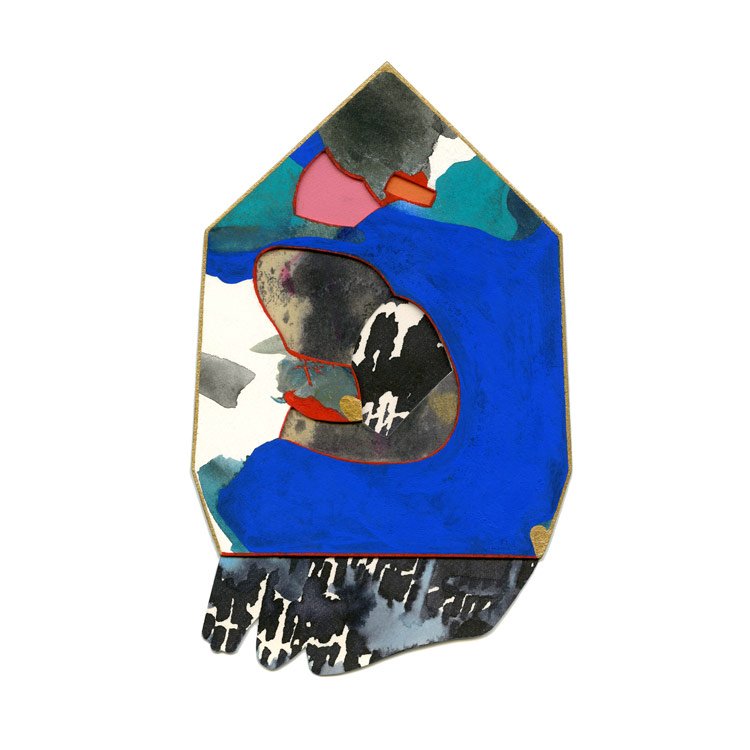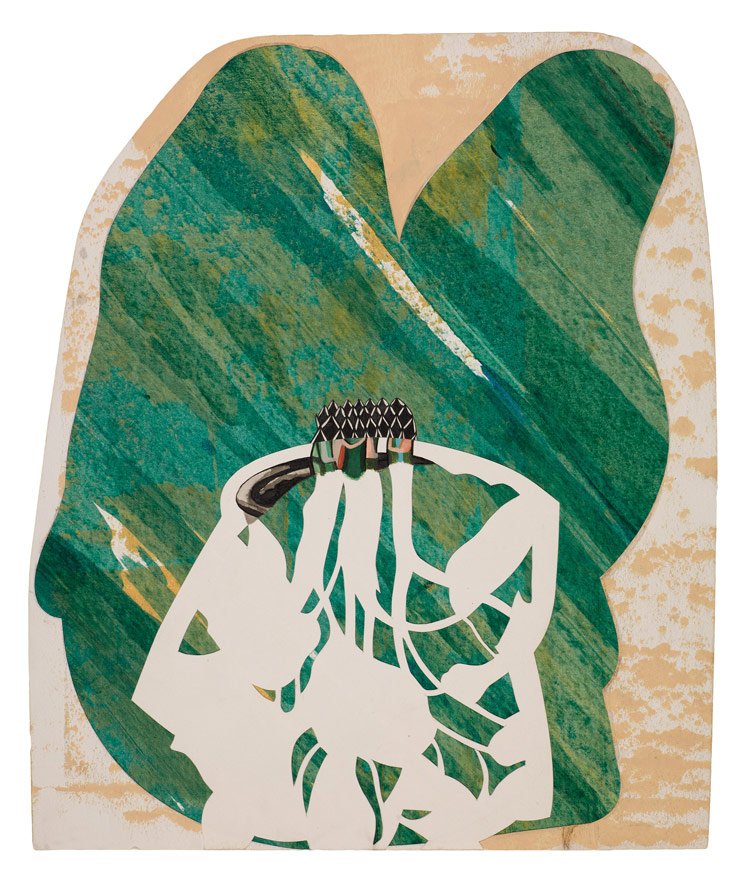RENÉE STAECK
About Renée:
Renée Staeck is a mixed-media artist and illustrator based in Portland, Oregon. She received a BFA in Fine Art/Drawing from the Milwaukee Institute of Art and Design (Milwaukee, WI) in 2003, and has been a working artist ever since.
Renée’s illustrative work varies from art nouveau and Persian miniature-inspired ink and watercolor vignettes to abstract landscapes. Her collage work is about material, process, and problem-solving, resulting in sculptural abstract forms made from paper palettes and scrapped drawings.
Renée draws most of her influence from the “hidden” beauty, mystery, and humor that underlies everyday life. She loves images that make you look twice, leaving you with more questions than answers.
Grand Image: How did you get your start in art?
RS: I started drawing as soon as I could hold a pen (ballpoint specifically) and became obsessed with creating interpretations of entire episodes of my favorite cartoons. My dad worked in an office and would bring home pens and big stacks of used printer paper that I would draw on the back of. Markers and lots of color soon followed. I also made cut paper figures and 3D structures. We had a small art museum in my hometown that offered some great art workshops for kids of all ages, and my parents enrolled me in classes there.
Grand Image: Why collage? What does this medium offer that others do not?
RS: My primary career centers around gouache and ink illustrations and commissioned paintings, but I’ve always had an ongoing body of abstract work as well. The collage pieces initially came out of utilizing paper studio scrap such as edges of paintings, paper palettes, and random line drawings. My paper bits vocabulary has expanded into using photo-realistic elements from magazines as well. Collage is a form of meditation for me, because it requires very little planning. The elements of the image are already available, so creating each composition is similar to putting a puzzle together with rules of my own making. It’s a playful way of constructing new abstract narratives.
Grand Image: Where are you from and how is that reflected in your work?
RS: I was born and raised in Racine, Wisconsin, an hourish north of Chicago. My family and I would occasionally take the train down to the museum at the Art Institute of Chicago. My mom and I would also visit my uncle in NYC almost every summer from the age of 10 through my 20s, so I grew up soaking in all kinds of art.
Grand Image: How has your relationship with art changed the way you view the world?
RS: I’m very grateful that art and art-making have always played a big role in my life. Art has allowed me to create a strong internal world and to see so much beauty in what others might consider mundane details of everyday life.
Grand Image: What supplies, tools, or mediums are must-haves in your studio?
RS: In my studio:
Holbein acrylic gouache
Gansai Tambi watercolors
Various inks e.g. walnut, india, acrylic
Pen nibs and Muji gel pens
Fabriano Artistico hot press paper
Lots of craft and watercolor brushes
Paper cutting scissors and x-acto knives
Grand Image: What is your current source of inspiration?
RS: The Pacific Northwest is home to an enormous variety of plant life, and my phone is full of plant pics from daily dog walks. The colors (so many shades of green!), textures, and patterns that nature produces are a constant source of inspiration.
Grand Image: What does your artwork say about you as a person?
RS: Since I have two pretty distinct bodies of work, it might say I have a split personality.
Grand Image: Please describe an artwork or series that was pivotal to your career.
RS: The WEST series was made a few years after I moved to Portland. I took a road trip from Portland to Phoenix that inspired this series of collaged watercolor landscapes.
Grand Image: If you could have your artwork hung anywhere in the world, where would you like that to be and why?
RS: I am honored to have my artwork in people’s homes and workplaces around the globe.
Grand Image: What artists inspire you? What do you like about them?
RS: This is very difficult to answer because there are so many, but one of my more recent discoveries is an artist named Joseph Yoakum. He began his artistic career at age 80, and made these beautiful intricately patterned landscapes using minimal materials.
Grand Image: Do you choose to stay on top of current trends? If so, how? If not, why not?
RS: I find it difficult to stay focused on what is important for me to create when I pay too much attention to trends. Over the past few years I’ve become more conscious of my social media usage because it can be overwhelming to see so much art all the time. That being said, I believe the collective subconscious always keeps us connected and sometimes attuned to certain themes.
Grand Image: What is your favorite way to implement self care?
RS: When covid lockdown happened I realized how burnt out and overworked I was. Like many folks, I really amped up my self-care game and have made it a priority to incorporate some of these into my daily and weekly routines no matter how busy life gets (easier said than done). My top five self-care habits are getting enough sleep, eating healthy foods, daily dog walks, maintaining a consistent yoga practice, and bubble baths.
Grand Image: What advice would you give someone starting out as an artist?
RS: Many people are discouraged if their work does not receive instant attention or praise. However, when you see artists that are deemed successful, it’s usually due to many years of prioritizing an art-making practice. It’s important for new artists to recognize their own motivations, so they are not swayed too much by public feedback, or lack thereof. Finding one’s unique artistic voice and allowing for growth and evolution are much more important than quick dopamine hits online. In other words, it’s a long game!



